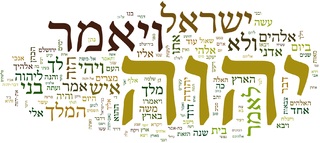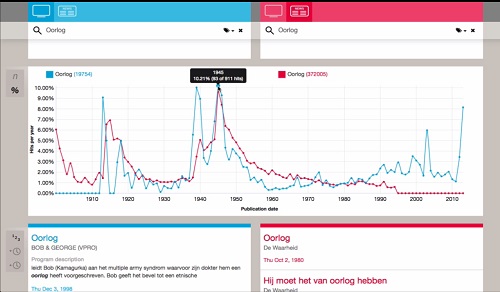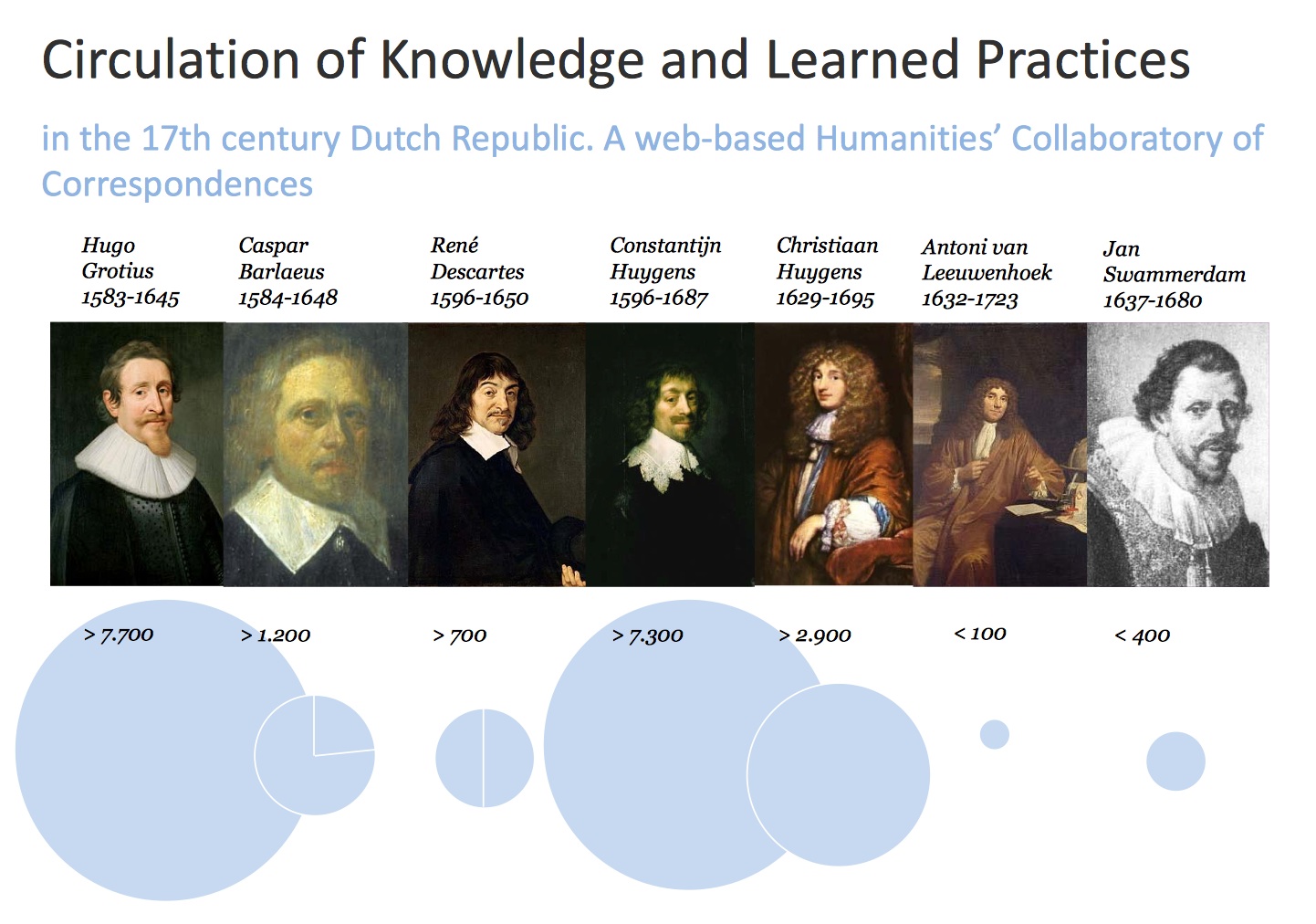
Nederlab

Nederlab, online laboratory for humanities research on Dutch text collections
SummaryA user-friendly and tool-enriched open access web interface that that aims at containing all digitized texts relevant for the Dutch national heritage and the history of Dutch language and culture (c. 800 - present).
BNM-I
BMN-I: Linked Data on Middle Dutch Sources Kept Worldwide
SummaryWeb application for consultation, using facetted search, and collaborative editing of the curated e-BNM collection of textual, codicological and historical information about thousands of Middle Dutch manuscripts kept world wide.
SHEBANQ

SHEBANQ: System for HEBrew Text: ANnotations for Queries and Markup
SummaryA web application that enables researchers to perform linguistic queries on the WIVU Hebrew Text Database and preserve significant results as annotations to this resource. This database contains the Hebrew text of the Old Testament enriched with many linguistic features at the morpheme level up to the discourse level.
AVResearcherXL

AVReseracherXL: Exploring audiovisual metadata in historical context
SummaryLASSY Word Relations Search
CKCC

CKCC - Scholarly Letters
SummaryFESLI
FESLI: Functional elements in Specific Language Impairment
SummaryTool for the quantitative and qualitative comparison of the acquisition of functional elements (morphological inflection, articles, pronouns etcetera) in a corpus with data from monolingual and bilingual children (Dutch - Turkish) with and without Specific Language Impairment (SLI).
